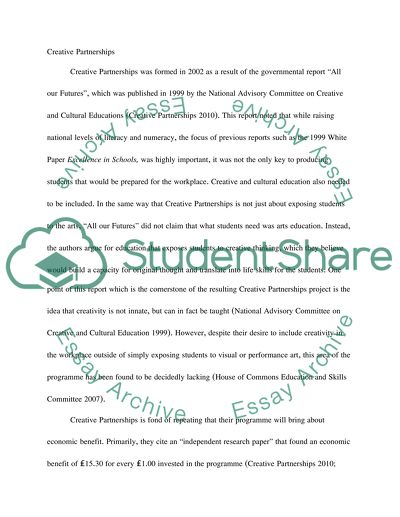Cite this document
(“Teaching Creativity in British Schools Essay Example | Topics and Well Written Essays - 1250 words”, n.d.)
Retrieved from https://studentshare.org/environmental-studies/1419864-teaching-creativity-in-british-schools
Retrieved from https://studentshare.org/environmental-studies/1419864-teaching-creativity-in-british-schools
(Teaching Creativity in British Schools Essay Example | Topics and Well Written Essays - 1250 Words)
https://studentshare.org/environmental-studies/1419864-teaching-creativity-in-british-schools.
https://studentshare.org/environmental-studies/1419864-teaching-creativity-in-british-schools.
“Teaching Creativity in British Schools Essay Example | Topics and Well Written Essays - 1250 Words”, n.d. https://studentshare.org/environmental-studies/1419864-teaching-creativity-in-british-schools.


